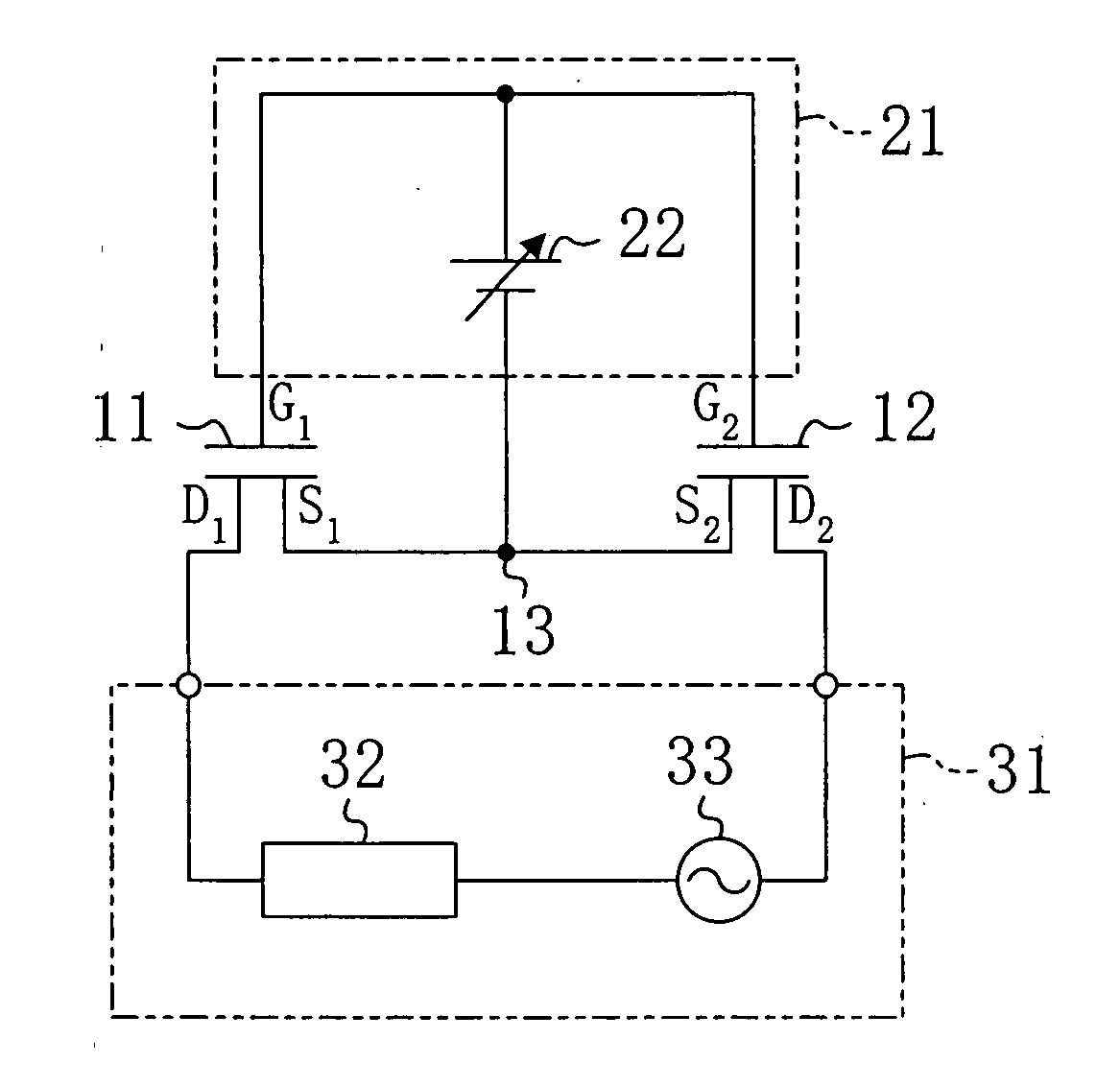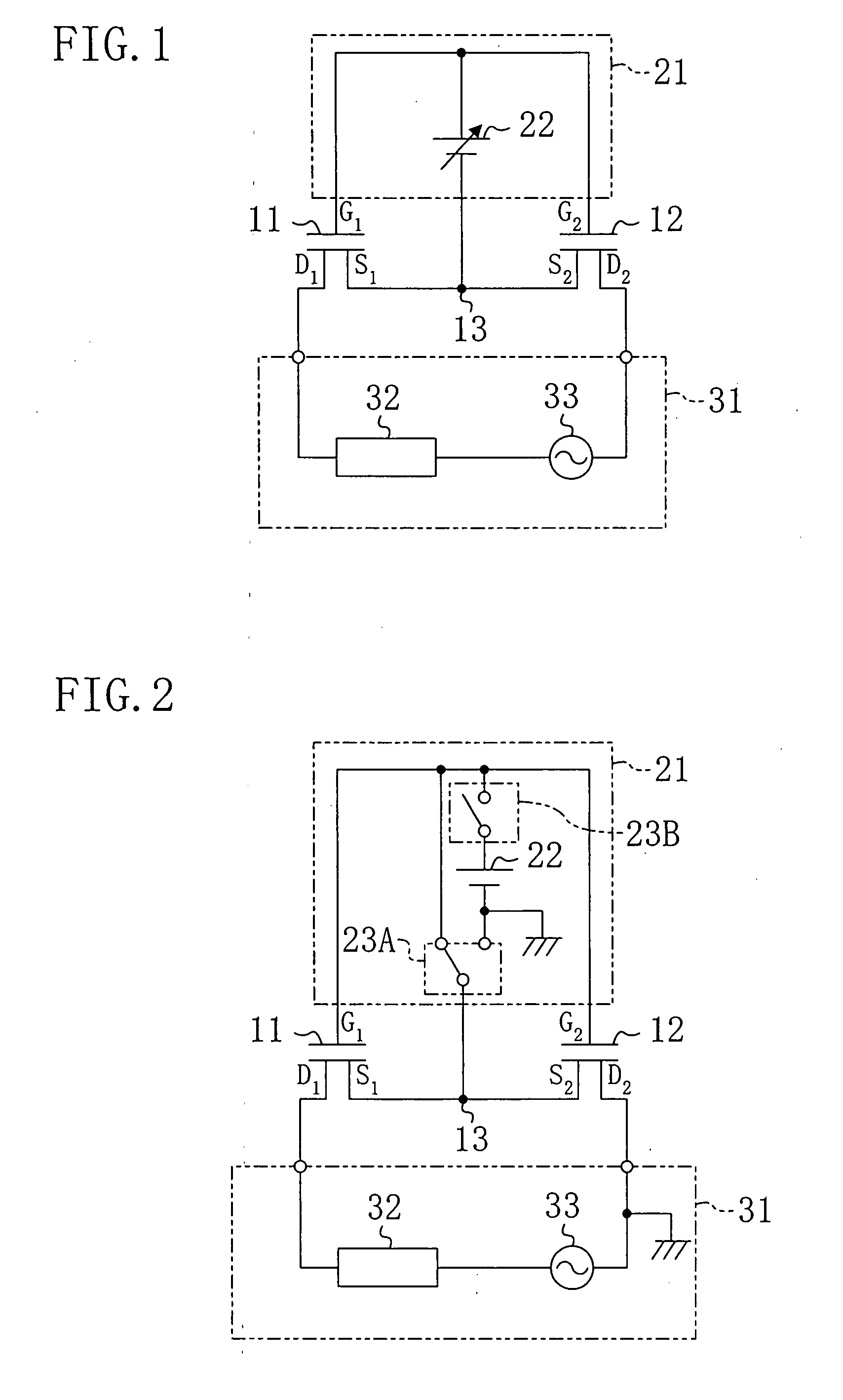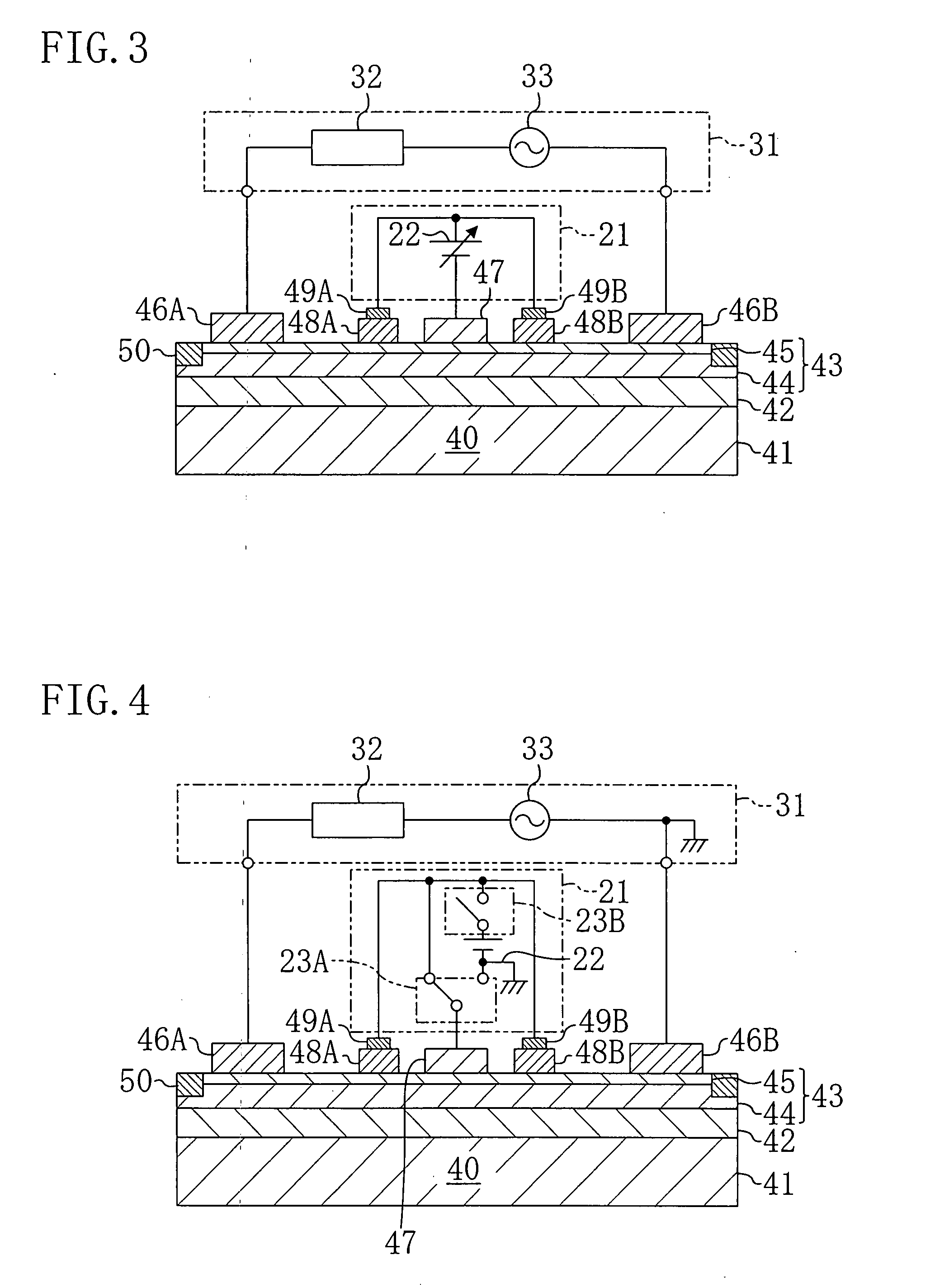Bidirectional switch and method for driving bidirectional switch
a bidirectional switch and bidirectional switch technology, applied in the direction of electronic switching, diodes, pulse techniques, etc., can solve the problems of increasing cost, limiting the reduction of on-resistance, power loss due to on-effect,
- Summary
- Abstract
- Description
- Claims
- Application Information
AI Technical Summary
Benefits of technology
Problems solved by technology
Method used
Image
Examples
first embodiment
Variation of First Embodiment
[0045]Hereinafter, a variation of the first embodiment will be described with reference to the drawings. FIG. 2 shows a circuit configuration of a bidirectional switch according to the variation of the first embodiment. In FIG. 2, the same parts as those of FIG. 1 are indicated by the same reference numerals and will not be described.
[0046]As shown in FIG. 2, in the bidirectional switch of this variation, the switch controller 21 is configured such that the control power supply 22 can be cut off from the circuit, and the node 13 and the gate terminal G1 and the gate terminal G2 can be short-circuited.
[0047]Specifically, the control power supply 22 is connected via a first switch 23A to the node 13, and via a second switch 23B to the gate terminal G1 and the gate terminal G2. The first switch 23A and the second switch 23B can be switched together so that the control power supply 22 can be cut off from the switch controller 21. The first switch 23A is a si...
second embodiment
Variation of Second Embodiment
[0070]Hereinafter, a variation of the second embodiment will be described with reference to the drawings. FIG. 8 shows a configuration of a bidirectional switch according to the variation of the second embodiment. In FIG. 8, the same parts as those of FIG. 3 are indicated by the same reference numerals and will not be described.
[0071]The bidirectional switch of this variation has a first diode 61A connected between the first ohmic electrode 46A and the reference electrode 47 and a second diode 61B between the second ohmic electrode 46B and the reference electrode 47.
[0072]The first diode 61A and the second diode 61B are a free-wheel diode for preventing excessively large current from being applied to the bidirectional switching device 40 at the instant when the bidirectional switch is turned OFF (where the load 32 is an inductive load (L load)), thereby avoiding breakdown of the bidirectional switch.
[0073]The first diode 61A and the second diode 61B may...
third embodiment
[0078]Hereinafter, a third embodiment of the present invention will be described with reference to the drawings. FIG. 10 shows a configuration of a bidirectional switch according to the third embodiment.
[0079]As shown in FIG. 10, the bidirectional switch of this embodiment comprises a bidirectional switching device 70 and a switch controller 21. The bidirectional switching device 70 has a semiconductor layer 73 which is grown via a buffer layer 72 on a substrate 71 made of silicon (Si) or the like. The semiconductor layer 73 includes an undoped GaN layer 74 having a thickness of 2 μm and an undoped AlGaN layer 75 having a thickness of 25 nm, which are epitaxially grown in this order from below. In an interface region of the undoped GaN layer 44 with respect to the undoped AlGaN layer 45, a 2DEG layer which serves as a channel region is formed due to an influence of spontaneous polarization and piezoelectric polarization.
[0080]A first ohmic electrode 76A and a second ohmic electrode ...
PUM
 Login to View More
Login to View More Abstract
Description
Claims
Application Information
 Login to View More
Login to View More - R&D
- Intellectual Property
- Life Sciences
- Materials
- Tech Scout
- Unparalleled Data Quality
- Higher Quality Content
- 60% Fewer Hallucinations
Browse by: Latest US Patents, China's latest patents, Technical Efficacy Thesaurus, Application Domain, Technology Topic, Popular Technical Reports.
© 2025 PatSnap. All rights reserved.Legal|Privacy policy|Modern Slavery Act Transparency Statement|Sitemap|About US| Contact US: help@patsnap.com



